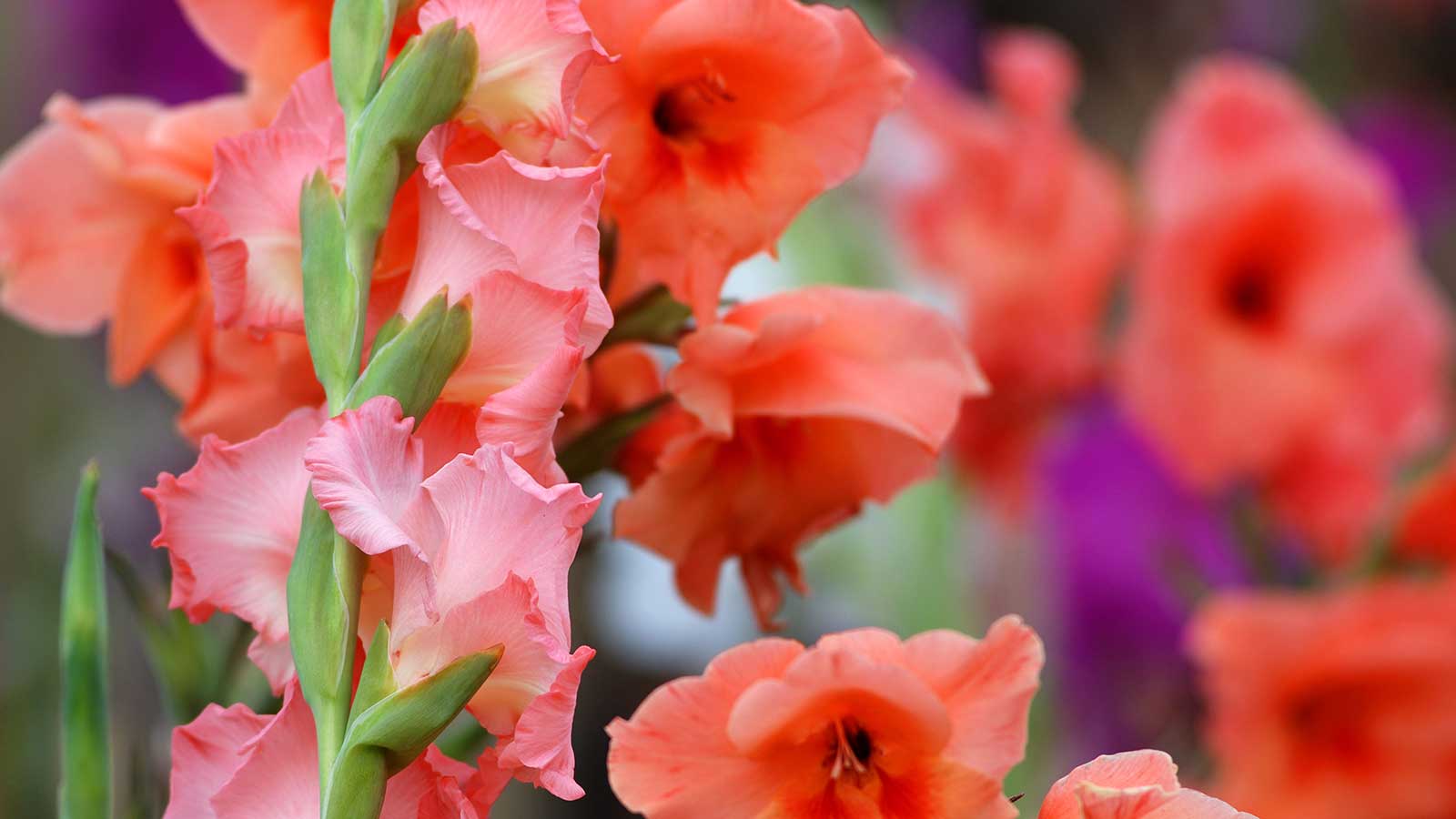
Q: I love gladioli and would like to have some of my own in my plot. However, as it is a paved courtyard, I would have to grow them in containers. Is this possible, and if so, are there any tips I need to know before I get started?
A: Structural gladioli with their blousy blooms make a real statement – and they're easy to grow in both borders and containers. In fact, growing them in pots has some advantages, as it can make it easier to give them the adequate drainage and sunlight that they require.
These summer bulbs make enough of an impact to be planted just by themselves. Alternatively, try pairing them with bold plants such as crocosmia, cannas or coleus – perfect for a tropical garden scheme.
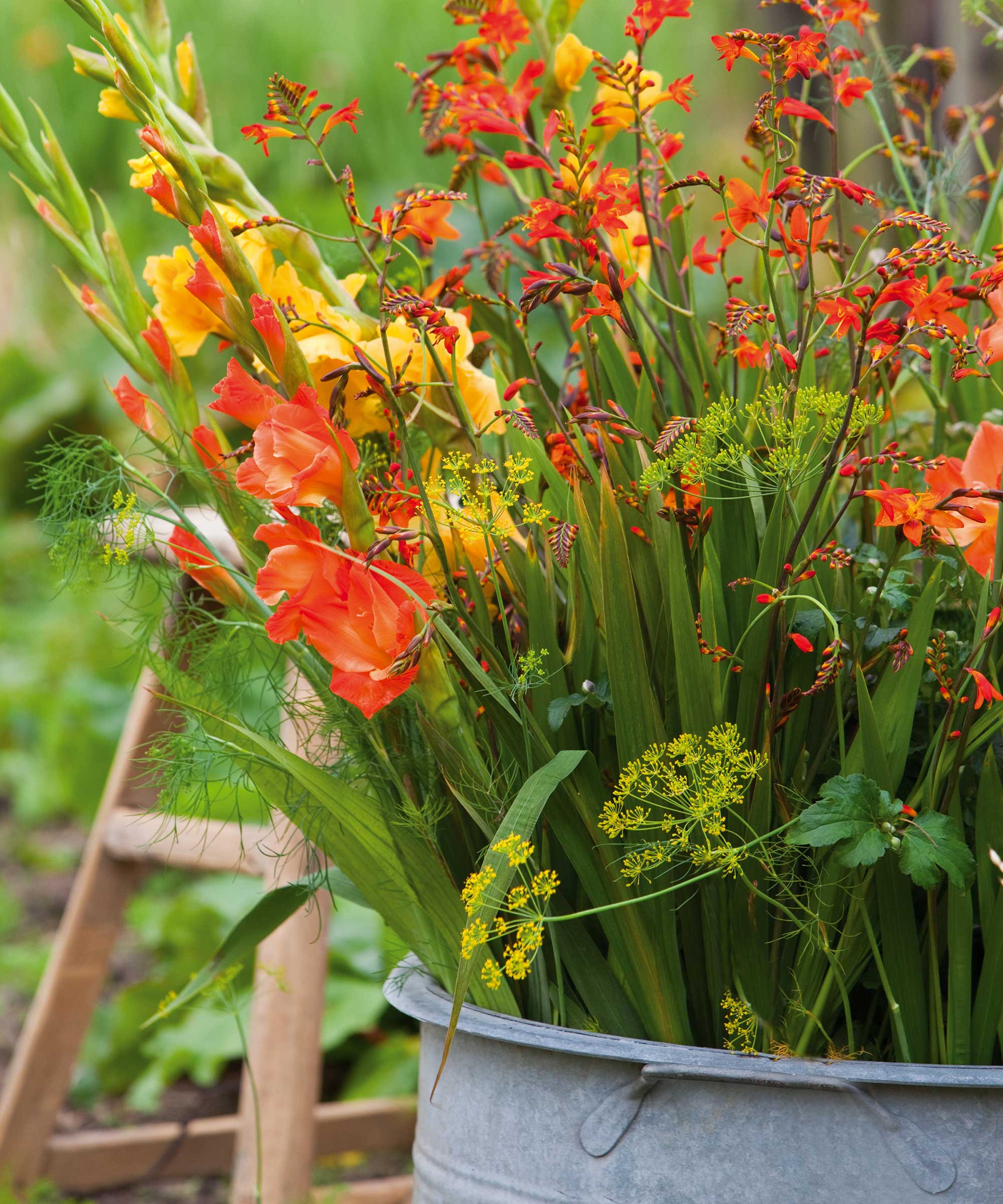
How to plant gladioli in pots
'Choose a larger pot for taller glads, to balance the height,' says Camilla Phelps, a gardening expert. Position the container somewhere with plenty of sun throughout the day.
Use crocks and a good-quality potting soil such as Wonder Soil available on Amazon, or one with added grit or vermiculite, so the growing medium is really well drained. Camilla suggests raising containers off the ground using pot stands – like these wheeled ones on Amazon – as this will let excess water escape and help to prevent the corms from rotting.
'Corms don’t require soaking or any special preparation beforehand,' says Camilla. Plant them around 4-6in deep. In the ground, they need to be spaced about this measurement apart, too. But according to the Royal Horticultural Society (the RHS), you can plant them slightly closer together when growing them in containers.
Camilla says the Nanus varieties of gladioli are generally better suited to pots as they don’t require staking. 'For taller gladioli, put stakes in when you plant the corms to mark the spot, and simply tie in the stems as they emerge,' she adds. 'This also helps to avoid accidentally piercing the corms if you add stakes later on.'
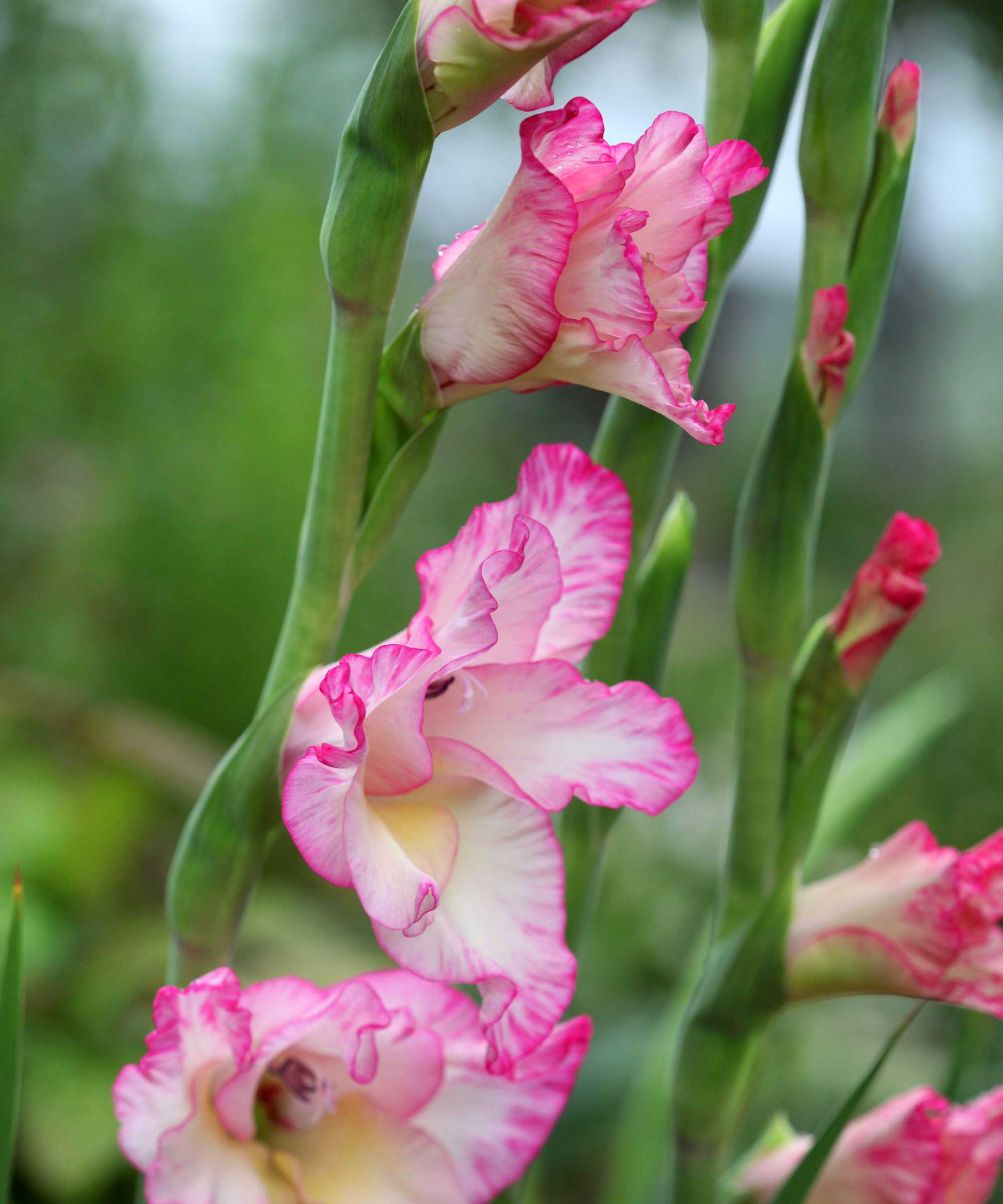
When to plant gladioli in pots
The best time to plant gladioli in the ground is in spring, when risks of frosts have passed. However, growing them in containers offers a little more flexibility.
'The advantage of planting bulbs in containers is that you can start them as early as March and keep them in a frost-free location,' says Camilla. Move the pots outdoors when it's warm enough. Alternatively, some gardeners choose to plant them out into their borders at this point.
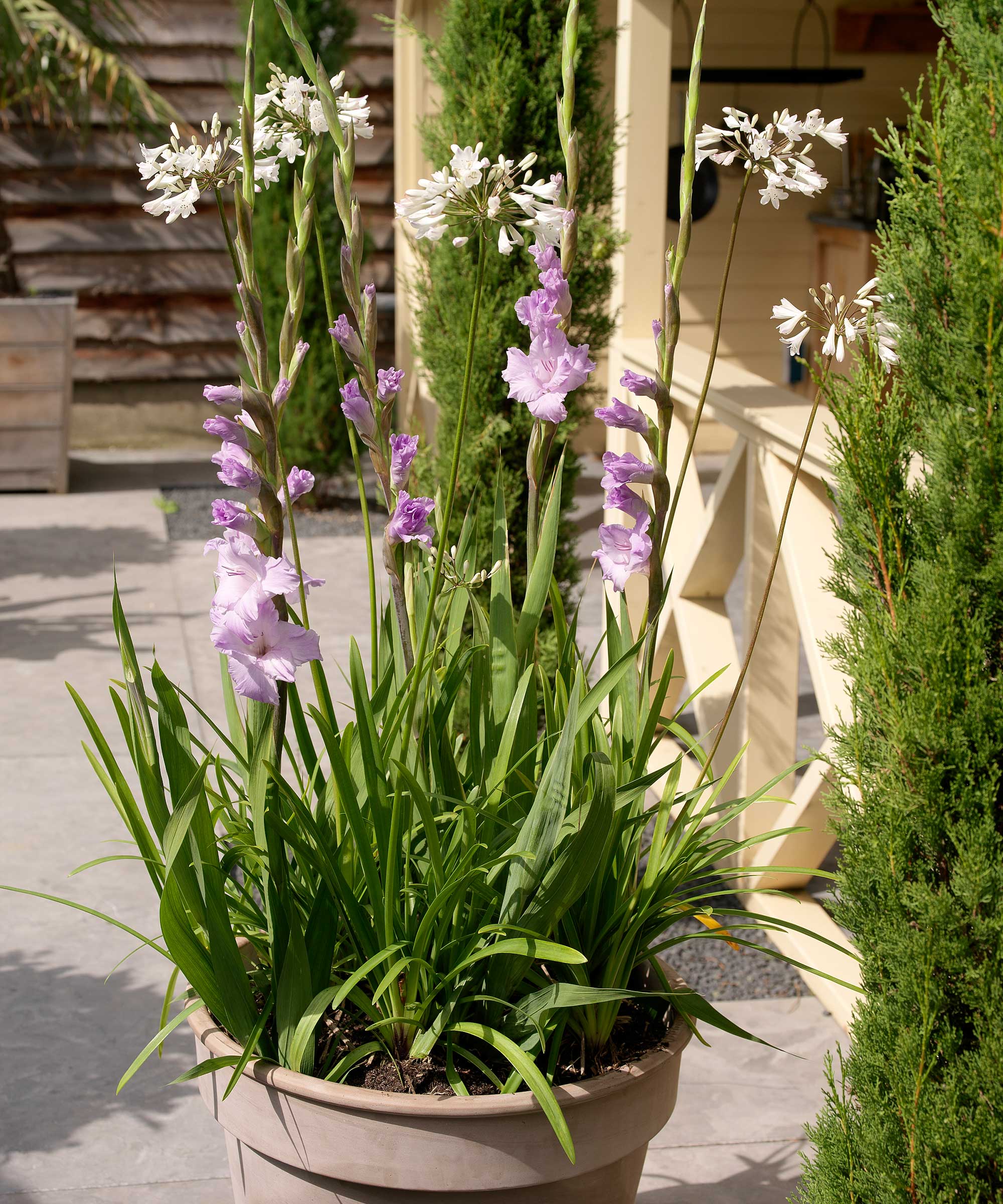
Feeding and watering gladioli in pots
'Keep the potting soil damp but not saturated,' says Camilla.
When the flower spikes begin to form, you can begin to feed the plants. Use a high-potassium fertilizer such as Burpee Organic Tomato and Vegetable Granular Plant Food or a liquid version like Espoma Organic Concentrated Tomato Fertilizer – both are available on Amazon.
Once they have finished flowering, reduce watering, then keep them dry during the dormant season, says the RHS.
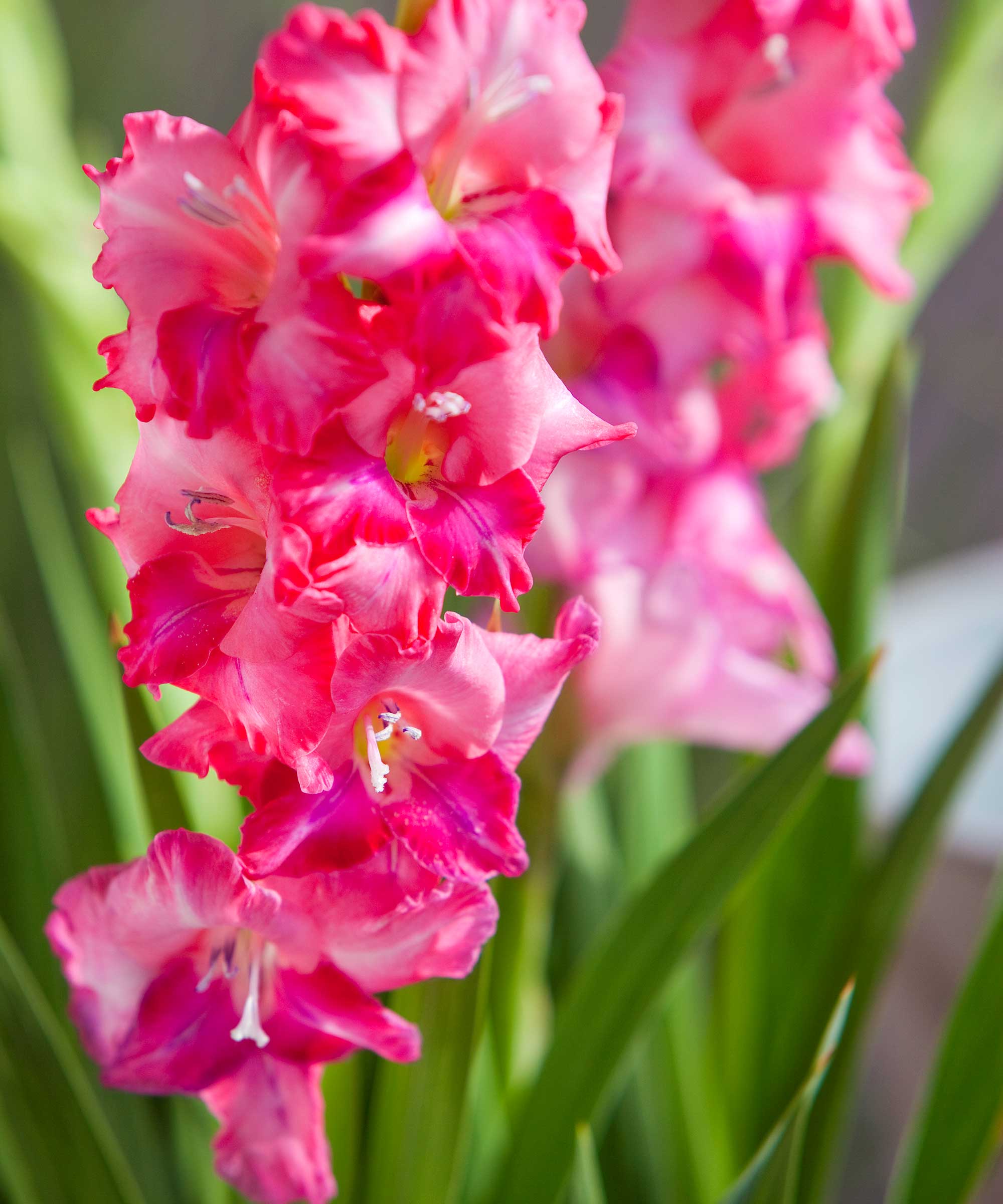
Problems to look out for when growing gladioli in pots
'Although relatively pest- and disease-free, watch out for slugs and snails feasting on young shoots,' warns Camilla. Get rid of them using pet-safe pest control, such as Sluggo Plus Wildlife- and Pet-Safe Slug Killer, found on Amazon.
Fungal diseases can affect plants during periods of cool, wet weather, she adds. These can be combatted by giving plants plenty of space to grow so they are well-ventilated and by using a fungicide such as Garden Safe fungicide, also available from Amazon.
FAQs
How should you overwinter gladioli in pots?
For milder regions, adding a layer of mulch on top of your pots or wrapping them in fleece can be enough to ensure your gladioli last the winter.
In colder climates, try moving the pots somewhere frost-free such as the shed. Or, if you want to use the pots for winter plants, lift the corms, dry them out, and store them in boxes or trays somewhere dry and cool – similarly to dahlias.
Gladioli make a spectacular addition to container gardening, so be sure to plant them in your space this spring. Just remember to give them sun and good drainage and they'll reward you with blooms that look beautiful, both outdoors and as cut flowers for your home.







